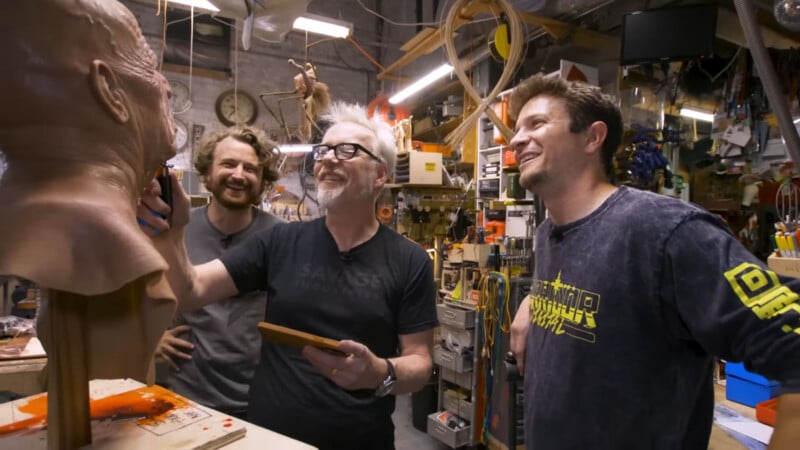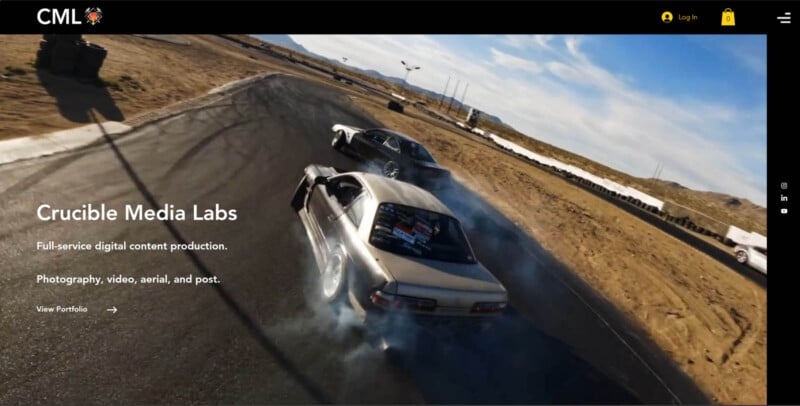![]()
When I was in college at the University of Minnesota, one of my senior-year classes at the Hubbard School of Journalism and Mass Communication involved putting together a website using Wix, to hopefully allow us to showcase some of the things we had worked on during our academic careers and set us up for a (hopefully) easier time finding work afterward.
I had never considered this before, which to be honest probably put me behind the eight ball in comparison to my peers. I had been employed in the sports media office for about two and a half years at that point, doing everything from operating remote PTZ cameras in the roof of the hockey rink to manning the control console for the large-format displays in the various venues on campus. Inexplicably, I never thought to try and archive everything I had worked on — meanwhile, some of my friends had minutes-long reels of their work, complete with flashy graphics and music, ready to hand to a prospective employer.

Needless to say, my website, while great in form given how long I spent on the design, lacked much function or substance. Desperately, I pulled every bit of work I still had sitting around on my computer and pretty much tried a spaghetti-and-wall approach, hoping that something-anything-would at least be passable and wouldn’t actively hinder me in the eyes of the hiring managers. Term papers on media and culture, mock ad campaigns, actual, literal iPhone photos I had taken of interesting things around campus, it all went up.
I ended up getting an A- on the assignment, whether through merit or pity I’m not certain. Far more valuable than what it added to my grade, though, was the value of the kick it gave me to actually start caring about and documenting the work that I was doing.
Digital Making
Over the past half-decade or so, since I’ve had the resources to participate, I have been enamored with the “maker” movement, the community that has cropped up around the idea that anyone, no matter their discipline, skill, or social position, can make Things, with a capital “T”.

One of my childhood heroes, Adam Savage (of Industrial Light and Magic and later Mythbusters fame), runs a YouTube channel devoted to this very premise, of which I am an avid viewer. Aside from practical advice on the intricacies of styrene-based plastics and their interaction with certain adhesives, or the best version of a specific tool he just happened to find in a junk box at a flea market, the most enthralling thing for me is just listening to the man answer viewer questions, many of them general questions on the subject of “making”.
Ever the people’s champion, Adam Savage defines making as (paraphrasing) any time you can reach out into the world with your particular point of view and create something from nothing. You may be sitting there thinking to yourself that a definition as broad as this ceases to have any meaning, but I think the reverse is true.
Whether you are a woodworker, a sculptor, a ceramicist, a glassblower, a graphic designer, a musician, a playwright, a photographer, or a filmmaker, it matters not. Some people might turn their noses up at the idea that the making of Things can include intangible Things, thinking themselves the ordained gatekeepers to the domain of making and that a physical, material object is the toll they are due. This could not be any further from the truth.
Every one of these and countless other creative endeavors is predicated upon the idea that you as a person are reaching inside yourself, drawing on your interior and exterior influences, your artistic preferences, and your emotions, to bring something into being that did not exist beforehand. Just as nobody has painted an exact duplicate of the Mona Lisa, even the fraudsters who have tried, everything we visual creatives make is entirely unique, and is defined by the experiences and circumstances that led to its creation. In the same way, a machinist may carefully select an alloy of metal and an end mill to work it, or a dancer chooses their shoes, we select our preferred lens and our favorite method of post-processing to make manifest the artwork we have in our heads.
For that reason, you and I are just as much a part of the maker movement as anyone who works in a machine shop or at a workbench or a lab, and it is with this context that we come back around to discuss the topic of portfolios.
To most people, a “portfolio” is a repository of work that is designed to entice a potential client or audience to engage with a person or business. It is largely a commercial asset, a way to put your best foot forward and show what you’re capable of creating.
But it can be more than that. As makers, many of us create things purely for the thrill we get from the creative process, the rush of adrenaline and endorphins we get from being able to point at something and say that we, not anyone else, brought that Thing into existence. A portfolio is an excellent way to exalt this aspect of making and shout about it from the rooftops.
Just Do It
“But my work isn’t good enough to start gathering to show others”, I can hear you lament. “I’ve only just started taking photography seriously. I haven’t shot any big jobs or done any long photo trips. There’s no point. It’s too early.”
Amazing. Every word of what you just said was wrong.

There is no such thing as “too early”. There’s no minimum time spent behind the camera, or number of photos taken, or jobs worked before you’re “allowed” to have a portfolio to document your own work. Even assuming there was, who gets the privilege of deciding when the cutoff point should be, and what assurance do you have that the creative pathway that they followed is at all relevant to your own experience? What proof is there that they will have any clue as to your intentions or aspirations? And what good would it do you to listen to someone who cannot answer either question?
There is also no such thing as objectively “good enough” because everyone’s definition of “good enough” starts in a different place and evolves over time as your skills grow and you develop your own unique point of view. I can say with certainty that the work that’s on my website right now is of light-years higher quality than what I was showing 3 or 4 years ago, and I’m sure I’ll be saying the same thing in 3 or 4 more years. Is this an indicator that my work is sub-par overall? Of course not. It just means that I am capable of learning and growth, as are you.
Mastery of any craft is as much about growth as it is proficiency at any one time, so putting together a portfolio, aside from being a representation of your work as a creative, is also a great tool with which to judge your own skill and how it’s improved. Any time you come away from a project with material you specifically want to add to your portfolio is a moment of growth, as is any time you decide to pull something out of your portfolio because it isn’t up to your current standard.
All of this is to say that, like the old proverb that gets applied to investments, eating healthy, and going back to school as an adult, the best time to start a portfolio was 20 years ago, but the next best time is right now. Even if you don’t intend to market yourself or your creative services, having one not only allows you to connect with other like-minded people to participate in the furthering of creative pursuits like ours but also provides a reference point for your own evaluation of your skills as you determine whether your new work makes the cut.
So go set up a website. Or get a bunch of your photos printed and make a scrapbook. Or hang them on the wall in your home. Or make them into trinkets to share with others. Your collaborators, friends, family, and future selves will thank you.
